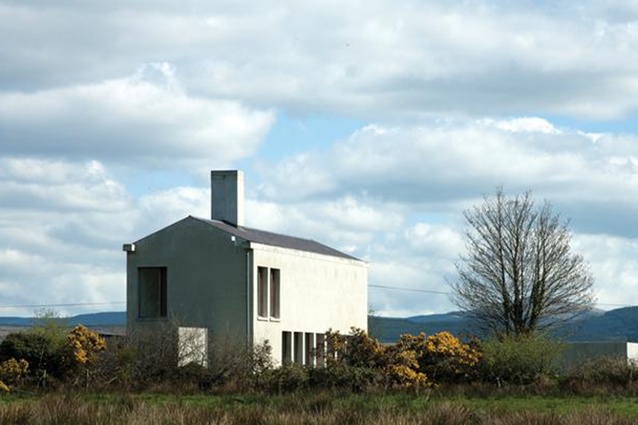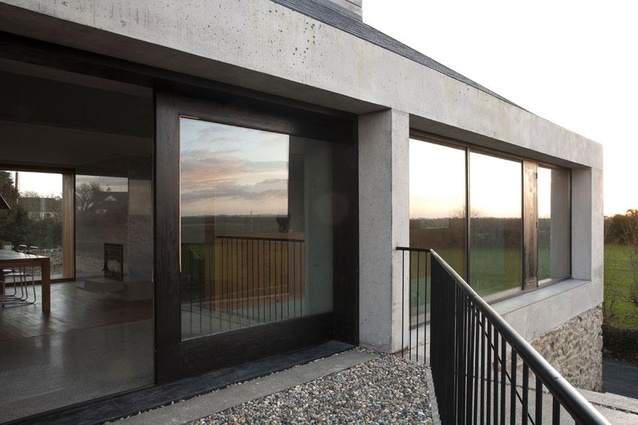Steve Larkin: Irish landscape
Following a lecture given in Melbourne at the 2015 Australasian Student Architecture Congress, Kiwi students Ryan Mahon and Elena Lochore-Ward speak with Dublin-based architect Steve Larkin to try and pinpoint the background of his architectural practice and his theories on the reading of Irish landscape, architecture and music as expressions of culture.
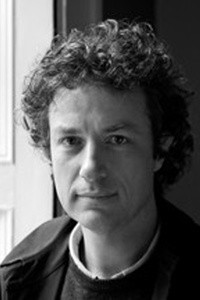
Elena Lochore-Ward: Something struck me in your attention to tradition, in not letting go of what had been already discovered and building upon things over time. Could you talk about how you saw the development of architecture in Ireland from the traditional cottage, from a few hundred years ago, to what you are doing now?
Steve Larkin: The tradition is actually older. Once somebody stops living in a cottage it’s usually gone within five to ten years. They fall into the ground again because they’re made of the ground, they’re made of earth and mud and so on, and the only reason they stay up is because there is a fire in the middle and it keeps a lot of the walls dry. Once that’s gone they just crumble back into the ground again, which is really nice because the places that I played in as a child were all those ruined cottages and I loved ‘em.
There are other cultures as well, so you get the castles, you get neoclassical architecture, and when English culture came to Ireland you get the neoclassical middle-sized house and so on. You inherited at that point palladianism, classical culture, etc. There is also a tradition of building in sticks which is gone because it is such a damp climate. Those things are now just fossils, and in that context there is layer upon layer of artifact which is read in our landscape. For example, stone walls and mounds in the ground are usually something to do with somebody building at some point in the past, and that’s what you have to begin to discern.
But from about the turn of the century onwards, there has been a very strong modernist culture in Ireland as well, and I am the inheritor of that in some ways, because when I went to college we had very good tutors. I came from a rural background with that playground of old stuff all around me, and I came through this school that had all these brilliant people, who demanded that you position yourself in terms of architecture. I think that was superb training and it allows me to look at a lot of other things with a certain structure, which otherwise I wouldn’t have had.
Ryan Mahon: Does your work condense these layered traditions? Are you approaching the contemporary through a combining of traditions?
Steve Larkin: Yes, very much so, and also reimagining them. In some ways it’s not purely academic where you map one thing and that changes this and that, and as you move through the project they become more or less apparent, but also it moves beyond culture.
For example, I’ve been hugely influenced by Borromini and other people as well, so the more you gain, the more your knowledge base expands. You’re pulling in influences, not just from Ireland, but across other cultures, and I think what is really interesting about building in place is that you have to make judgements about the nature of the influences, how to excavate all that stuff on a place.
Back to the idea of form then, form is when you realise that the mix of ingredients is quite perfect for that place. I think there is a problem in contemporary culture sometimes, that everybody wants to be new, nobody wants to feel as though they have robbed an idea from somewhere else. That’s a problem, because if you do that everybody is just searching for new things all the time and so the act of culture gets lost.
In that instance, people like Siza, Kahn, etc, search back through tradition and culture to look for archaic form or artifacts that are very valuable, and that give you insight into what it means to be human, and I like doing the same. Now I do it very locally, very specific to a place. I do think actually understanding the local is the best way to understand the un-local.
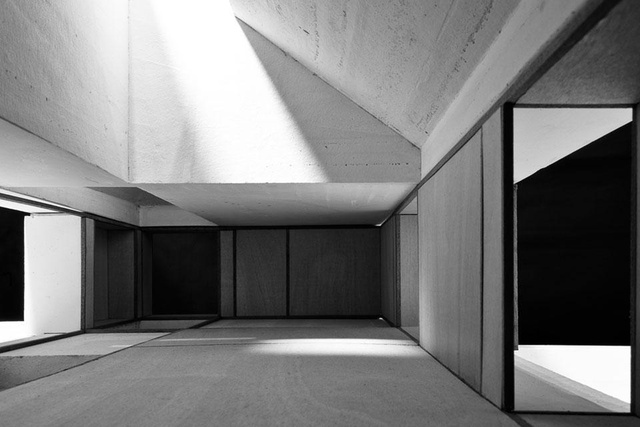
Ryan Mahon: Given your re-use of historic forms and celebration of tradition, do you see your practice as being post-modern in any way?
Steve Larkin: No, I don’t think so. Again, it is really just drawing on those for figuring out ways of doing things and so on. I’m pretty straight down the line in terms of making buildings that are completely efficient and are completely about how they are built. I don’t think they should be layered up in some sense of symbolism or any of that.
I do think that that is an important thing, actually being true, being straightforward and honest about how things are made to suit what happens within the building. That’s where that richness of symbolic form or archetype comes from. They have to be completely efficient and they have to be suited their task.
Elena Lochore-Ward: In the talk you spoke about how music responded to the landscape. I suppose in a metaphorical sense, do you feel that the music was pre-existing within the landscape and that people came and found it, or is the music made as a response to landscape? I suppose the same happens in architecture?
Steve Larkin: I think it is just made, society comes together and they want to make music and they do. In Ireland, society makes the landscape too, and they make their music. Landscape isn’t there first, it’s all manufactured. The geology remains, the topography remains, but how we read landscape, it is all made really.
It’s five thousand years old, if you go up to the most remote place of Ireland there is a couple of rocks thrown together in some way or another. I think your question is a good one, because I think it illustrates that landscape isn’t there first imbuing its character on people. People are there in their societies and they make landscape to suit their societies, they make music to suit their societies and they make architecture to suit their societies.
That’s why it’s in that world of landscape or music the process of making things becomes distilled over time, absolutely stripped back to the essential nature of doing something, and so they become artifacts of the culture. They describe in some way the culture.
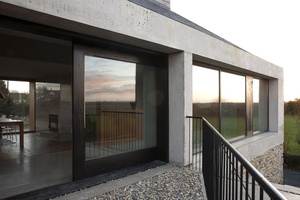
Ryan Mahon: You mentioned how “You must obtain tradition through great labour”, which I thought was a really nice point, that you didn’t just arrive upon it, you had to work to understand it. In this labour do you remake tradition and then add to it? Do you see yourself as a maker of tradition?
Steve Larkin: I don’t think you make tradition, I think tradition is a conversation. Nobody makes it, but you do engage in the conversation, as a living breathing entity. It’s not like you set out to make tradition. It’s like any culture, you just jump in, and through your involvement with everybody else there the tradition evolves. I don’t think we make tradition.
Elena Lochore-Ward: But you’ll become part of the evolving tradition and your work will inform the work of students who follow you.
Steve Larkin: Yes. It was really interesting in Irish music, because obviously it’s an oral culture, so there’s no making of it, it literally exists in this cloud of oral sound, however you want to picture it. People who grow to love or grow to play it, go in and play with everybody else, and over time that tradition evolves and takes on tastes and fashions.
What’s really interesting about it is there’s many parts of that, and as you get older the less fashion and styles dictate, and you begin to understand those cardinal points of that tradition. I think through that engagement, you begin to understand it more and you get at the nub of it, the whole reasoning. But that takes a long time.
Elena Lochore-Ward: Which is the great labour?
Steve Larkin: Which is the great labour, yes.
Ryan Mahon: So if buildings are always formed by the surrounding cultural landscape, are you ever tempted to make a building that goes against place?
Steve Larkin: If it needs to it will. When a building works in a place and evolves out of the culture of a place it sits better into the social culture, so it’s not architecture trying to be novel or trying to expand ideas of architecture. It actually just looks at the culture. The houses are part of the community, rather than being distinct and separate from the community because of their imported ideas.
For the people who live in them it embeds their lives more in the culture of the place rather than positioning their lives as a series of imported ideas, and I think that’s good for the people who live there. It’s always about society, it’s always about the ways in which people live.
For more information on the programme and speakers at the Australasian Student Architecture Congress, see the website.

